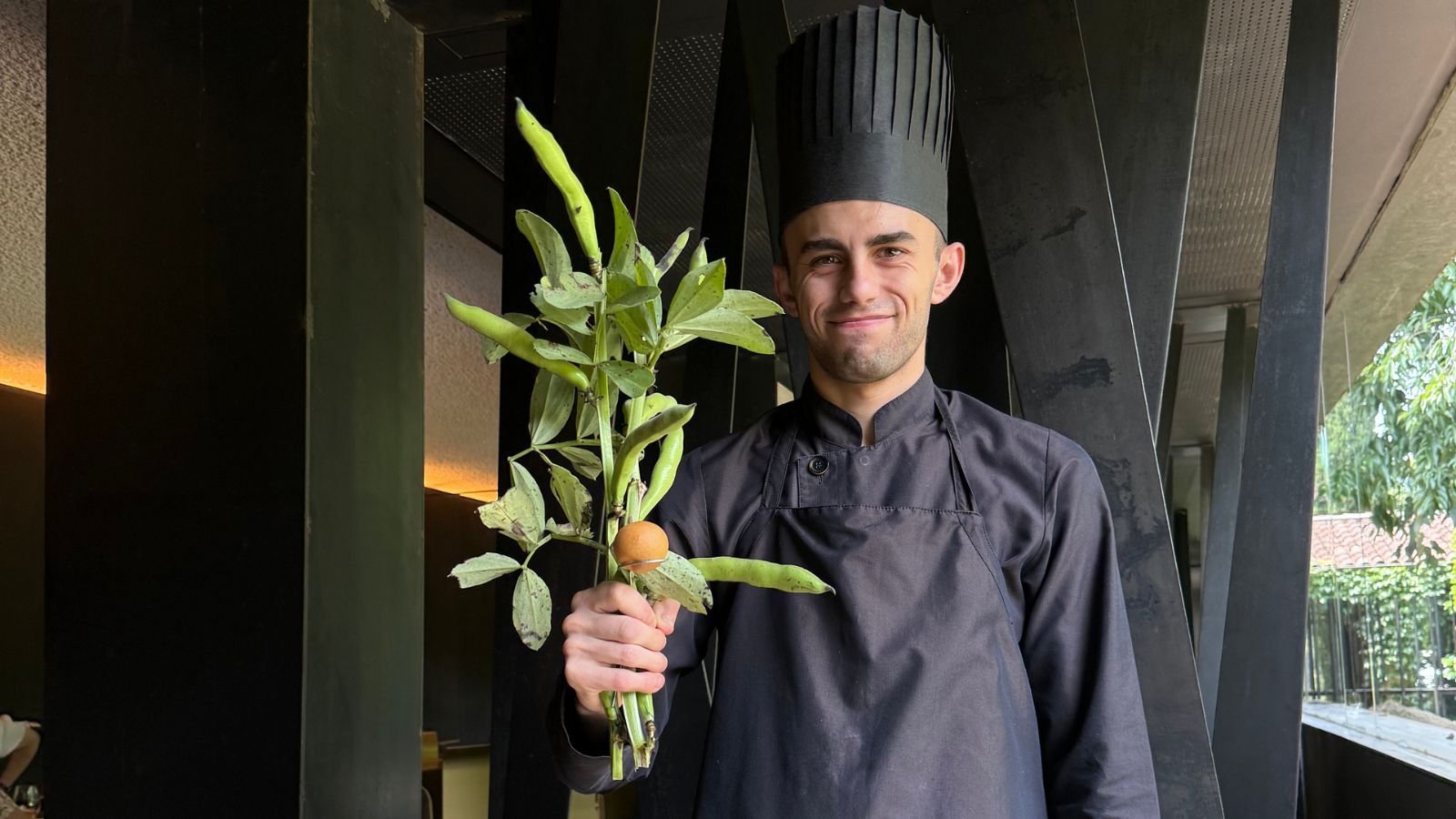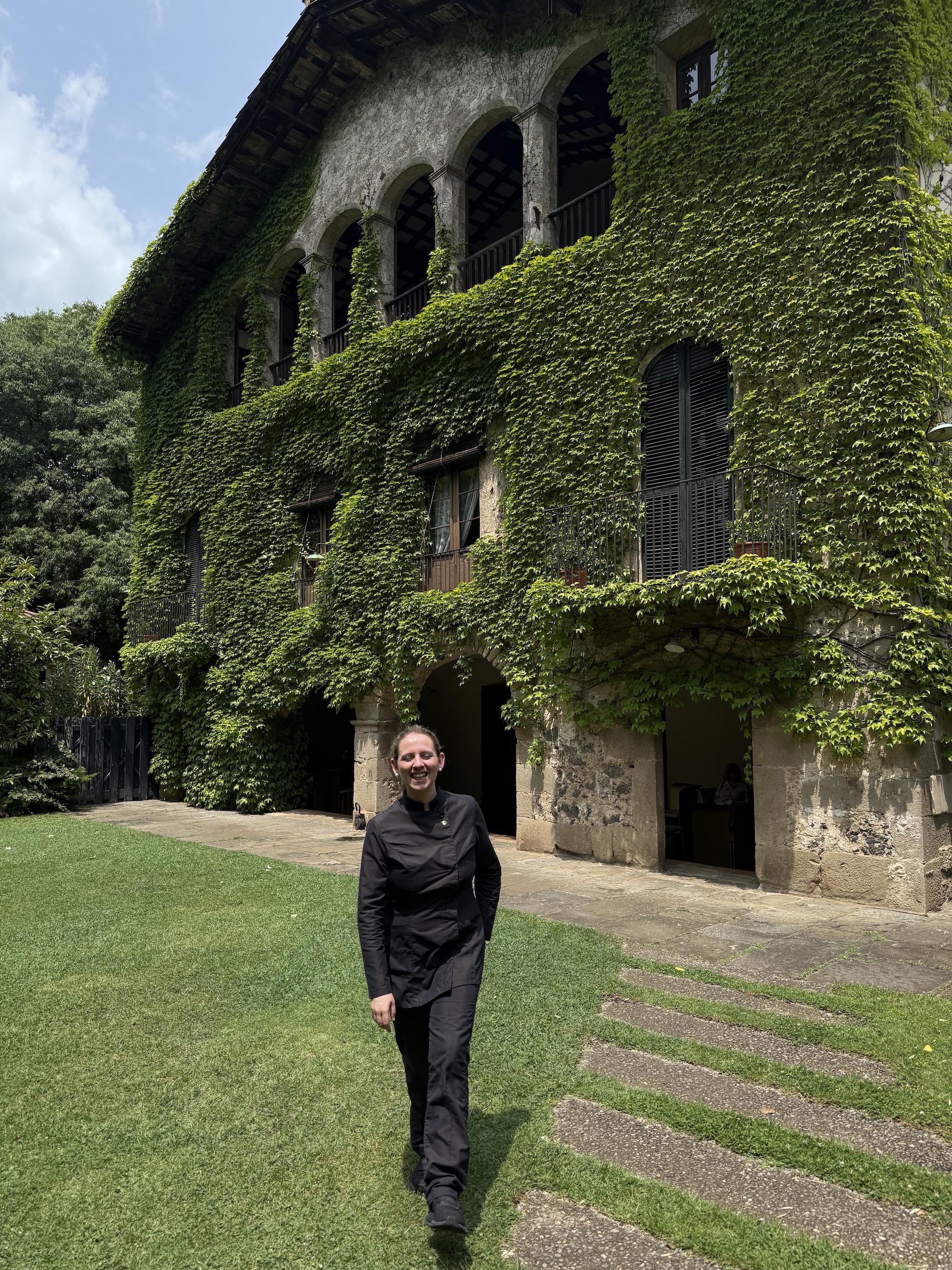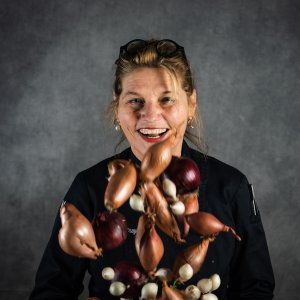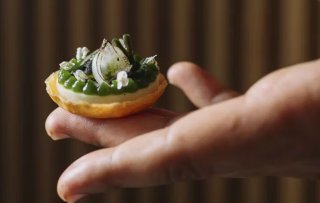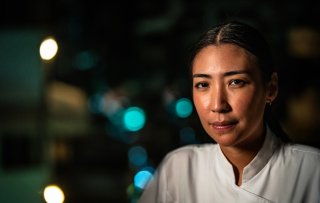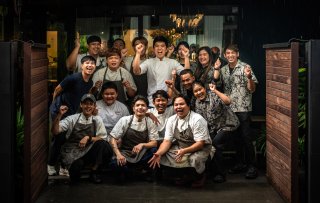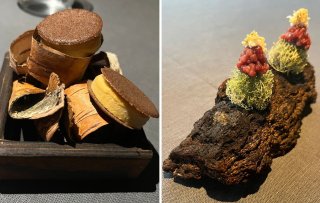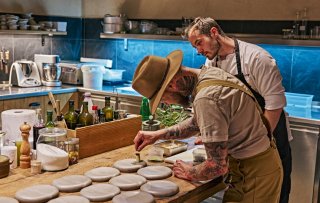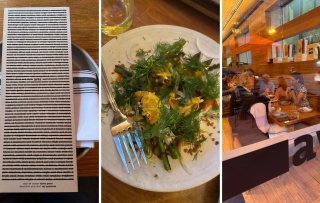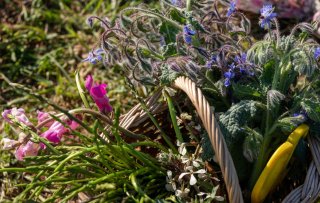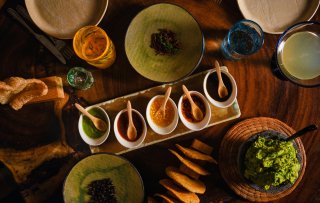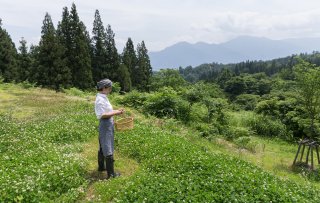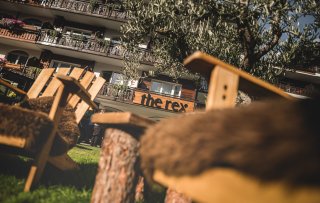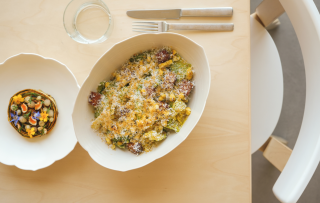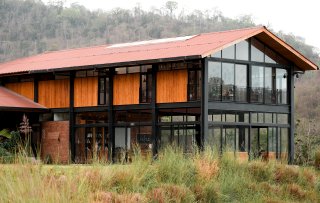Broth heated by hot volcanic stones, a chef offering you a bunch of broad beans, buckwheat beer with corn snacks eaten in the kitchen and friandises of thyme and pine cone with coffee. A dinner or lunch at Spanish restaurant Les Cols breathes in everything the place where the family's farm has stood for centuries; the volcanic La Garrotxa Natural Park around Olot.
When Fina Puidgevall opened her restaurant in Olot thirty-five years ago - in 1990 - she was considered a dreamer. But she proved herself right. Anno 2025, Les Cols received high recognitions from Michelin (two Michelin stars as well as a green star), Repsol (3 suns) and We're Smart World (4 radishes). Food Inspirations Sheila Struyck spent a day with the Puidgevall Puigvert family.
Her three daughters now work within the company. Daughter Martina is kitchen chef, Carlota is pastry chef and Clara maître sommelier. Four women with the same gastronomic philosophy: to embrace the landscape, story and native produce. As sustainable as possible.
Let nature take its course
It does take a bit of navigation skills to get to the "I&D garden" of Les Cols in the northern Spanish town of Olot. If you are having lunch at the restaurant during the week, you may visit this Innovation&Design garden beforehand. I get the location shared via whatsapp and end up at a gate via a bumpy country road. No sign with the name on it, no fancy building or greenhouses. No fuss, the only clues are a manure pile and a sign that this is a regenerative farming area for a special primal breed of sheep from the Garrotxa.
The tour takes in forty different "beds," from which the gardener sends flowers, young twigs, vegetables and fruit to the kitchen daily. It looks sligthly eclectic, different colors and shapes, all varieties mixed together. This is a time-honored way of doing things, now making a resurgence under the name regenerative agriculture. It means that nature is allowed to take its course here: no poison, no plowing or digging and no fertilizer.
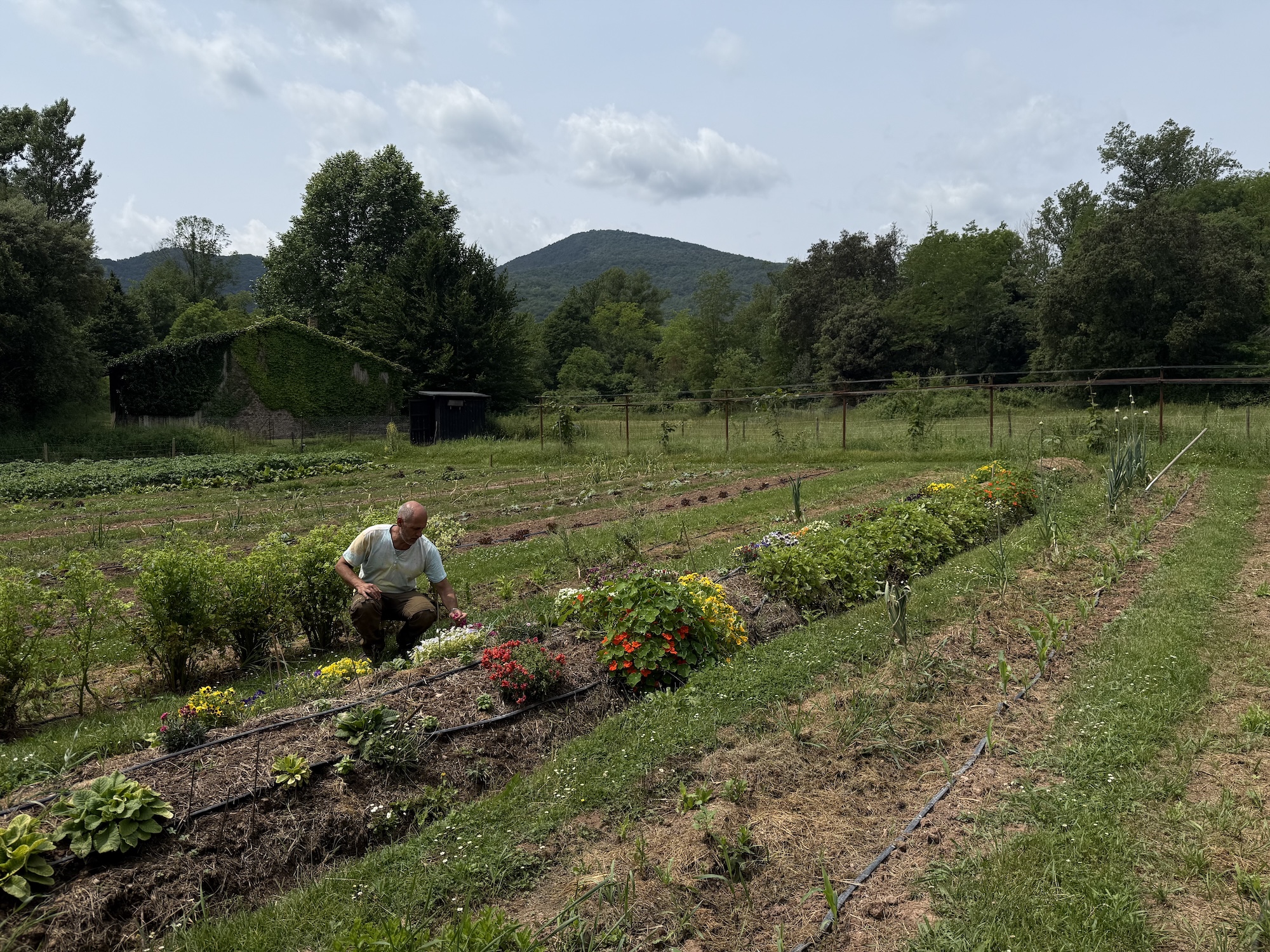
Chickens and sheep as coworkers
A meter and a half tall, iridescent purple-flowering cardoon moves in the wind. "The emphasis here is on flowers, which is what the kitchen loves," the gardener says. So broccoli and mustard seed are not harvested, but left until they bloom. Only local varieties are grown here: potatoes, buckwheat, onions, medlars, corn and more. And in this circular system, animals are put to work. The mobile chicken run is regularly put somewhere else, so they can open up the ground with their beaks and paws all over the plot. The girls lay eggs in thanks for the leftover vegetables that come off the land and the kitchen. When the gardener whistles, a dozen Garoxxa sheep immediately come running: the living reapers of the vegetable garden.
Tranquility and attention to the crop are the core values for success according to the friendly gardener. He explains that only sporadic guests from the restaurant come to visit the garden: "Especially people from Barcelona who don't know how vegetables are grown anymore."
About Les Cols
Chef Fina Puigdevall started a farm-to-fork restaurant in 1990 at age 27 with her husband in her great-grandfather's farmhouse. At the turn of the century, she stopped serving seafood, because the sea - 80 kilometers away - does not fall within her principle of local cooking. Firmly rooted in her volcanic native soil, she dares to think big. She asked a world-renowned architect to completely transform the century-old farmhouse. Puigdevall was declared crazy by locals, but rewarded by Michelin with no less than two stars. The architects - RCR - also won a prestigious award for their design.
Twenty-five years after opening, their three daughters now run the business, but the principles - and the decor - are still unchanged. The vegetable garden near the restaurant became too small for the harvest that is now needed daily. Located about a ten-minute drive away, there is now the I&D garden, which also serves to inspire and illustrate the story of the chefs' native soil.
Open from Wednesday through Saturday for lunch and dinner, on Sundays for lunch only. The price of a menu is €175. There is a set menu - no a la carte.
Award-winning architecture in a medieval farmhouse
Ten minutes by car to Olot and I walk through a huge glass revolving door into the restaurant. Every guest at Les Cols is shown around before going to the table. My guide is Fina's daughter Clara, the sommelier and maître. She tells me that her mother always says Les Cols can only exist in one place on earth, right here.
The wine cellar was built in the former water storage for the horse and cow stables. From there you walk through the golden hall with seating for forty, past the private dining rooms. Then outside we walk along a meandering path made of volcanic stones to a monumental open "room" for large receptions and dinners. The space is minimalist, with much use of oxidated metal and glass.
Eventually we arrive at the back facade of the medieval farmhouse and go back in. The restaurant space is slightly below ground level. My table is by the window. At chest level is the garden where chickens roam. The restaurant is a monument of robust modernism. A magnificent altar to the simple ingredients of this region. The hard metal chairs look uncomfortable at first glance, but the cushions make the seating surprisingly comfortable, even after a few hours. And they need to be, because the lunch consists of about 20 dishes.
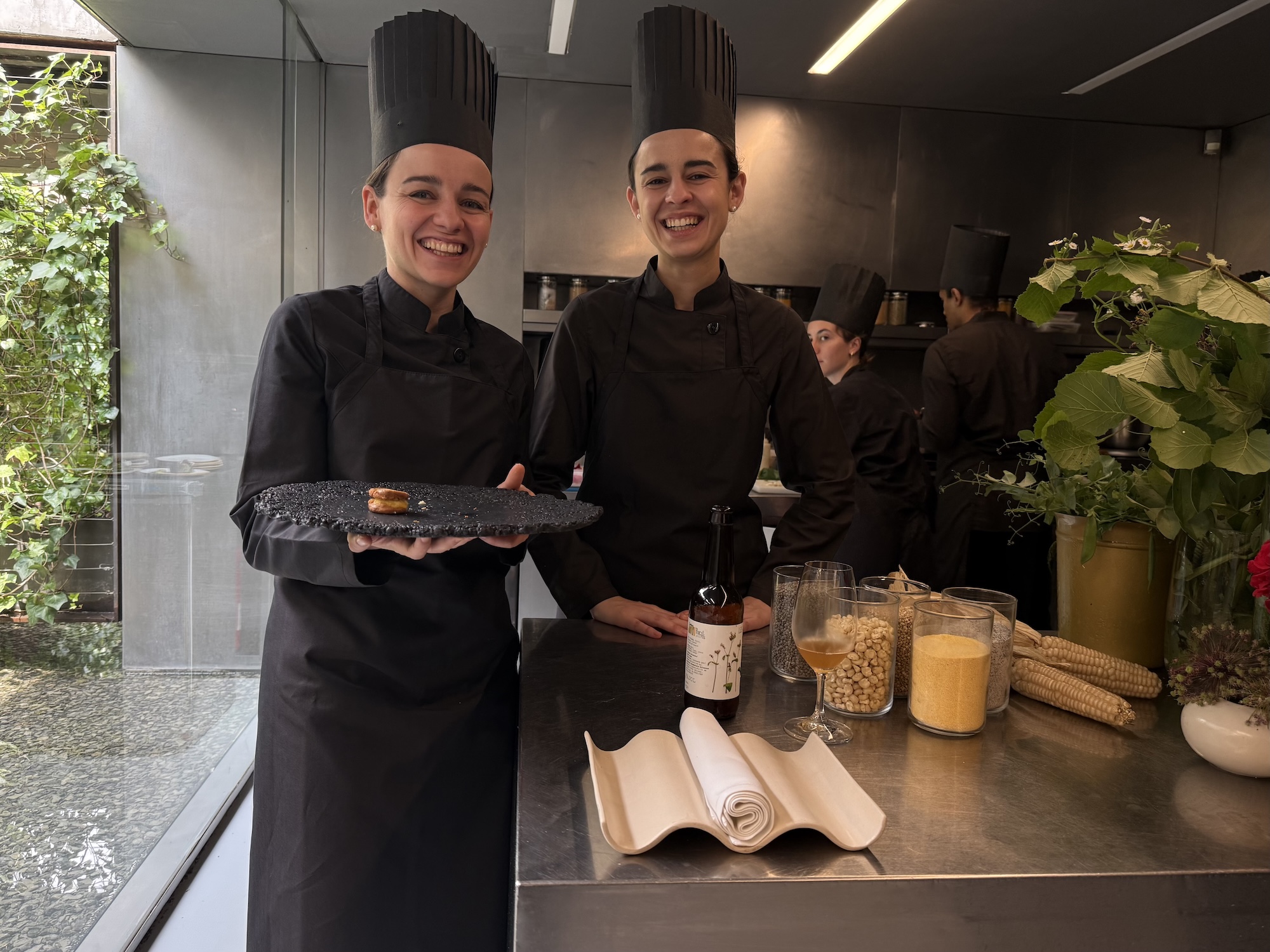
Menu: Show and tell
The amuses are an ode to the garden. Think beautiful crispy bay leaf, with dots of bay cream, served with a branch of the bay tree. Then a chef came to my table with a bunch in his hand; it looked like a bunch of budding lilies. But then I saw that they are branches with broad beans. Sticking up from the center was a small ring, with a little ball filled with broad bean cream on top. I had seen these beans growing in the garden just an hour earlier. That makes the taste experience much more intense. The snacks touch all your senses, promising much for what is to follow.
Snacking in the kitchen
At the end of the amuses, I am invited into the kitchen which looks like a laboratory, with sleek aluminum and square shapes. A bit starstruck, here I am suddenly face to face with chef Fina and two of her daughters. Martina was named Spain's "best young chef" by Michelin in 2024. She shows me buckwheat and corn and explains how those grains have traditionally fed the people of the Garratxa, but have now fallen out of favor. Straight from the stove, she offers me a crisp piece of corn bread, situated on a corn cob. And a buckwheat galette, accompanied by buckwheat beer from a local microbrewer. Brewed especially for Les Cols.
Steaming welcome
The first course is served at the table by three chefs. The dish is called "as a way of welcome". The chefs talk about the volcanic soil and how it determines the taste of everything that grows on it. On the tray is a broth, in a bowl made of volcanic rock. They drop glowing lava coals in there, heating the broth. A lot of steam and smell is released. You see, feel and smell the Garrotxa.
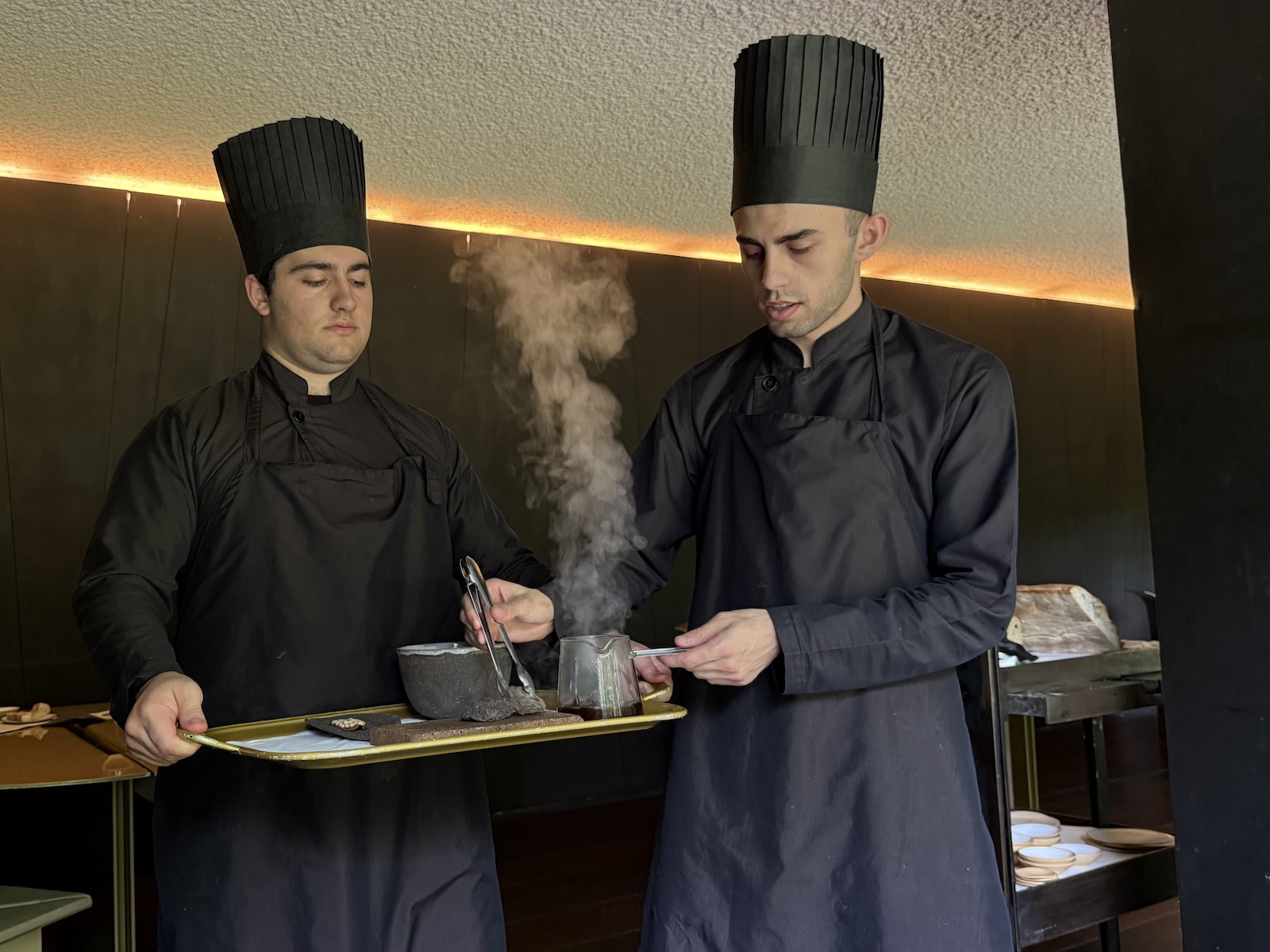
Eggs are a permanent fixture on the menu
Clara explains that there is always an egg dish on the menu. Chickens fit into the system of regenerative agriculture and this closes the circle. Chickens cultivate (improve) the soil, eat insects and kitchen waste, and fertilize crops. The eggs are spotlighted in the restaurant. Mine was a ‘perfect egg’ cooked at 64 degrees Fahrenheit, with spring morels, cream and corn. Seeing those chickens scurrying outside from my table makes it special.
Precious beans
The bean dish that follows consists of exclusive white beans from Santa Pau, which are served in a tin with a wooden spoon, just like caviar. In all its simplicity, with a little chili pepper and parsnip chips, this dish is an ode to the legume often underestimated by chefs. Those from Santa Pau are world-famous thanks to the refined flavor due to the volcanic soil . Everything on the plate serves the taste of the little white pod, nothing else. This is a true signature dish of the restaurant.
Recognize the seasons
The icing on the cake for me are the fresh peas. Fina lovingly smokes them in the pod on the BBQ. She then "double-peels" the peas and serves them bright green and shiny. Along with it comes a pod containing shiny 'peas,' with lots of mint. It emotes me in an unexpected way. This is a serenade to these few weeks in June, the only weeks the gardener can harvest fresh peas. On your plate, you can taste where you are.
At Les Cols, you taste what you see, you recognize what you eat. Old recipes have been dusted off and stripped down to the essentials. The stories of origin and preparation do the rest. This family has built an altar to their native soil and the simple ingredients that mature there.

 Written by
Written by 